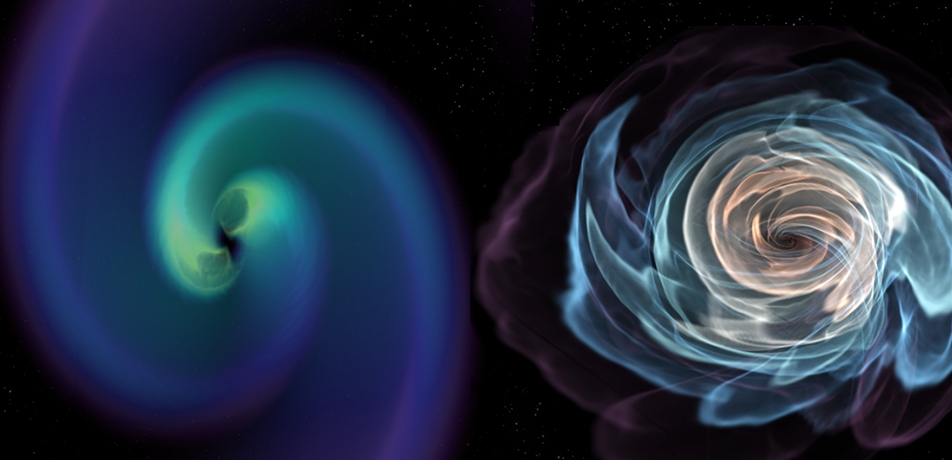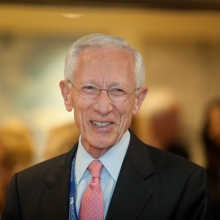Gifts from the stars
How a cosmic collision produced metals on Earth
Briefs

Credit: LIGO
One day last summer—August 17 to be exact—was a big day for astronomy. On that day, scientists witnessed the massive collision of two neutron stars, the densest objects in the universe besides black holes. The event provided the first detailed look at what Einstein predicted 100 years ago: that “ripples” in the fabric of space-time will be produced when a massive object—such as a star—is accelerated or otherwise disturbed.
But while experimental confirmation of Einstein’s so-called “gravitational waves” theory earned scientists the 2017 Nobel Prize, the bright, fast-fading flash of this latest collision produced something even more valuable: a wealth of data that is helping astronomers answer basic questions about the origins of the universe, as well as the basic elements from which the universe is constructed.
At the Weizmann Institute, examination of electromagnetic radiation produced by August’s neutron star collision is helping to explain how relatively rare heavy elements, such as iodine, uranium and gold, may have been created.
Neutron stars are extremely heavy, yet tiny for a star—just 10 km across—and can appear as rotating two-star systems that generate gravitational waves. Emission of such waves, as well as other forms of radiation, causes star systems to lose energy, and it has long been predicted that neutron star pairs will eventually move closer, then collapse into each other. So when signs of this type of collapse appeared, a team of scientists from the Department of Particle Physics and Astrophysics including Prof. Avishay Gal-Yam, Prof. Eran Ofek, Prof. Eli Waxman, and Dr. Doron Kushnir got right to work, measuring the electromagnetic “fingerprint” of this cosmic event.
“The first gravitational waves were detected in 2015 as a result of the collision of two black holes—stars with a gravitational field so intense that no matter or radiation can escape,” Prof. Gal-Yam says. “Neutron stars, on the other hand, are slightly less dense, so when they collide they emit gravitational waves as well as a wide range of electromagnetic emissions, from gamma rays, to X-ray, to ultraviolet, infrared, and even radio. Decoding these messages taught us something interesting about the formation of heavy metals, elements that have one common chemical characteristic: a high ratio of neutrons, as opposed to protons, in the atomic nucleus.”
Scientists have hypothesized that heavy metals are formed somewhere in the universe where there is an over-abundance of neutrons, and neutron stars—which, as one might suspect, are made mostly of neutrons—was a likely candidate. Using spectroscopy, a measuring technique which analyzes how atoms absorb and emit different types of radiation, Prof. Gal-Yam studied the emissions produced by the recent neutron star mash-up, and found spectroscopic profiles matching those of rare heavy metal elements. This, he says, provides convincing evidence that such elements came into being as a result of this long-ago stellar collision, in a galaxy far, far away.
“The collapse of this pair of neutron stars occurred 100 million years ago, but with detection technologies improving all the time, I believe we won’t have to wait an additional 100 million years for another event to examine,” Prof. Gal-Yam says. “In the meantime, our team at the Weizmann Institute—like astrophysicists all over the world—has plenty to learn from this one.”
Prof. Avishay Gal-Yam is supported by the Deloro Institute for Advanced Research in Space and Optics, Paul and Tina Gardner, and the European Research Council. He is a recipient of the Helen and Martin Kimmel Award for Innovative Investigation. Prof. Eran Ofek is supported by the André Deloro Institute for Space and Optics Research, Paul and Tina Gardner, and Ilan Gluzman. Prof. Eli Waxman is supported by the Nella and Leon Benoziyo Center for Astrophysics which he heads, the Schwartz/Reisman Institute for Theoretical Physics which he heads; and he is the incumbent of the Max Planck Professorial Chair of Quantum Physics. Dr. Doron Kushnir is supported by the Abramson Family Center for Young Scientists.








